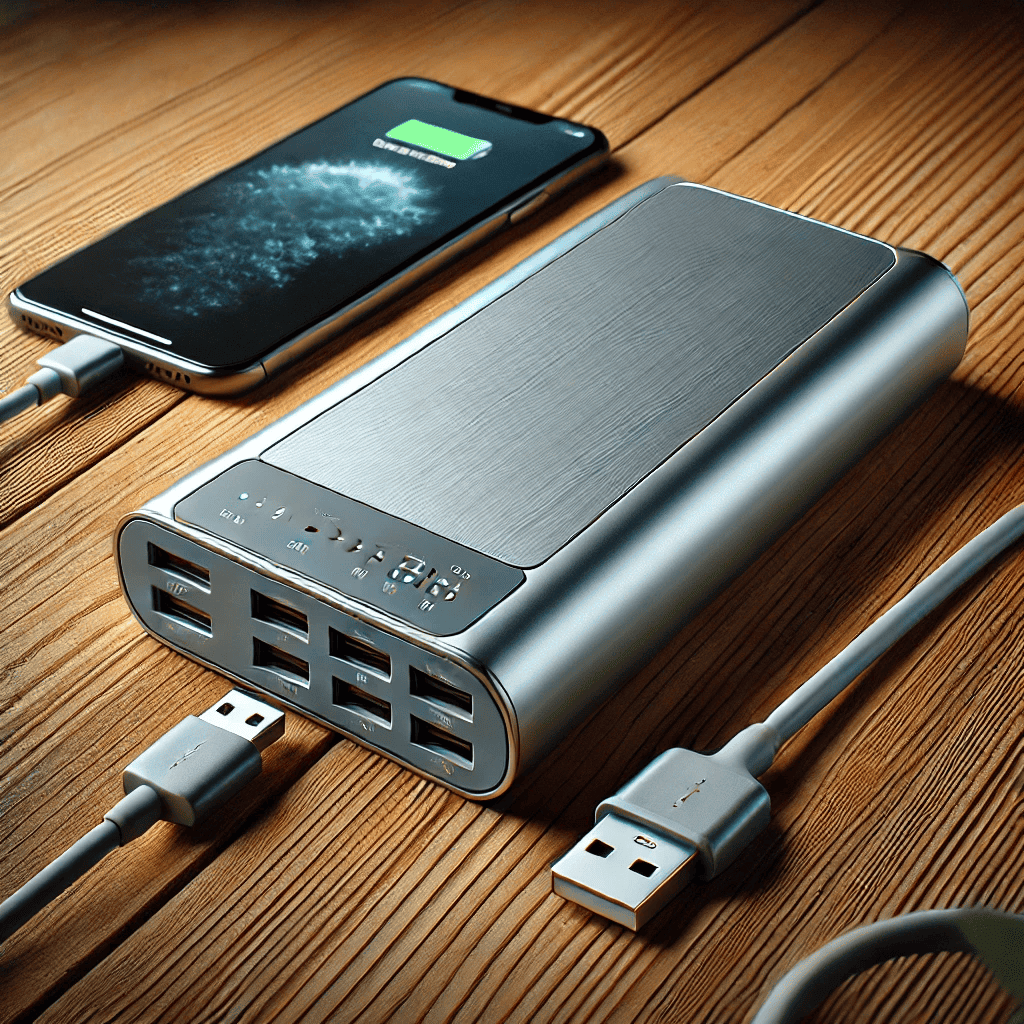In today's digital era, staying connected is essential, and a power bank has become a must-have gadget for people on the go. Whether you are traveling, commuting, or simply away from a power source, a reliable portable charger ensures that your smartphone, tablet, or laptop never runs out of battery. In this guide, we will explore the different types of power banks, their key features, and answer some frequently asked questions to help you choose the best one for your needs.
Understanding Power Banks
Understanding Power Banks
A power bank is a portable battery pack designed to store electrical energy and charge devices when needed. It comes in various capacities and sizes, catering to different user needs. Some power banks are designed for smartphones, while others are powerful enough to charge laptops and gaming devices.
Types of Power Banks
Types of Power Banks
1. Standard Power Banks
These are the most common types, offering USB ports for charging smartphones, tablets, and other small gadgets.
2. Solar Power Banks
Equipped with solar panels, these power banks use sunlight to recharge, making them ideal for outdoor enthusiasts and travelers.
3. PD power Bank(Fast Charge)
These support quick charge technology (e.g., Qualcomm Quick Charge or Power Delivery (PD)) to ensure your devices charge faster than standard power banks.
4. Wireless Power Banks
Designed for wireless charging these allow you to charge compatible devices without using a cable, ensuring a clutter-free experience.
5. Laptop Power Banks
Higher-capacity laptop power banks that support USB-C PD technology can efficiently charge laptops, making them great for business travelers.
Essential Features to Consider in a Power Bank
Essential Features to Consider in a Power Bank
1. Capacity (mAh)
Measured in milliamp-hours (mAh), the capacity determines how many times the power bank can charge your device. For example:
5,000mAh: Charges a smartphone once.
10,000mAh: Charges a smartphone 2-3 times.
20,000mAh: Charges a smartphone 4-6 times or a tablet once.
2. Output Ports and Charging Speed
Look for power banks with multiple USB-A and USB-C PD ports to charge multiple devices simultaneously.
3. Fast Charging Support
If you want quick top-ups, choose a power bank with Qualcomm Quick Charge 3.0 or USB Power Delivery (PD) support.
4. Size and Portability
Consider a compact design if you need a lightweight power bank for daily use. High-capacity power banks are larger but more powerful.
5. Safety Features
Ensure the power bank has protection against overcharging, overheating, and short circuits to keep your devices safe.
FAQs About Power Banks
FAQs About Power Banks
1. How do I choose the right power bank for my device?
Choose a power bank with a capacity that meets your charging needs and ensure it supports the required voltage and fast-charging technology for your device.
2. Can I take a power bank on a plane?
Yes, but airlines limit power banks to 100Wh (watt-hours) or 27,000mAh in carry-on luggage. Check with your airline for specific restrictions.
3. Charging Time for a Power Bank: What to Expect?
Charging time depends on the power bank’s capacity and input charging speed. A 10,000mAh power bank typically takes 3-5 hours, while a 20,000mAh power bank may take 6-8 hours with a fast charger.
4. Can I use my phone while charging it with a power bank?
Yes, but using your phone while charging may slow down the charging process and generate heat.
5. Why is my power bank charging my device slowly?
This could be due to using an incompatible or low-quality cable, a low-output power bank, or multiple devices being charged simultaneously.
6. How long does a power bank last?
A good quality power bank lasts 300-500 charge cycles, which translates to about 2-3 years of usage, depending on frequency.
7. Do power banks lose charge when not in use?
Yes, power banks gradually lose charge over time. A fully charged power bank can retain power for about 1-3 months, depending on its quality.
8. Can I charge my laptop with a power bank?
Yes, but ensure the power bank has at least 20,000mAh capacity and supports USB-C Power Delivery (PD) with a minimum 30W output.
9. Are power banks safe to use?
Yes, as long as you buy from a reputable brand and ensure it has overcharge, short-circuit, and overheating protection.
10. How can I extend my power bank’s lifespan?
Avoid deep discharges, store it in a cool place, and use quality cables and adapters for charging.
Conclusion
Conclusion
A power bank is an essential accessory for modern-day users who rely on their devices throughout the day. Whether you need a compact charger for daily use or a high-capacity one for travel, selecting the right portable charger ensures your gadgets never run out of power. By considering key features such as capacity, fast charging, and safety, you can find a power bank that perfectly fits your needs.


